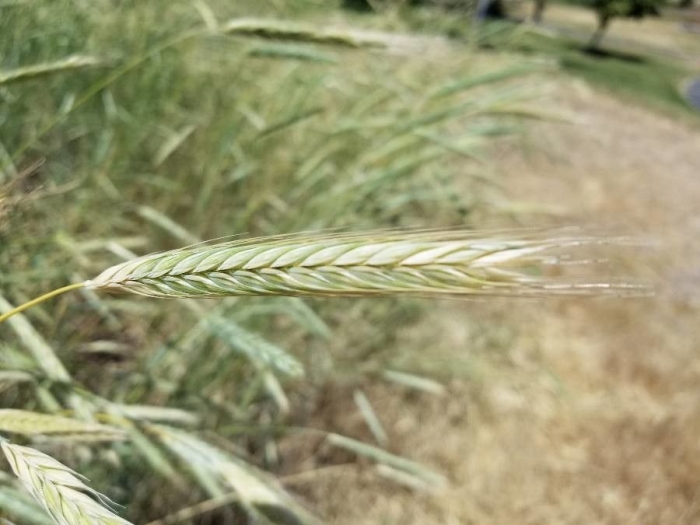Basin Wild Rye
(Leymus cinereus)
Basin Wild Rye (Leymus cinereus)
/
/

Michael Finch
CC BY-SA 4.0
Image By:
Michael Finch
Recorded By:
Copyright:
CC BY-SA 4.0
Copyright Notice:
Photo by: Michael Finch | License Type: CC BY-SA 4.0 | License URL: https://creativecommons.org/licenses/by-sa/4.0/ | Attribution: Michael Finch (cc-by-sa) | Rights Holder: Michael Finch | Publisher: PlantNet | Date Created: 2019-06-18T12:27:14Z | Title: Leymus cinereus (Scribn. & Merr.) A. Löve: fruit | Notes: |






















































Estimated Native Range
Summary
Leymus cinereus, commonly known as Basin Wild Rye, is a perennial grass native to a variety of habitats including open woodlands, grasslands, plains, and scrub areas in the Western United States and Western Canada. It is not evergreen but goes dormant in winter. Basin Wild Rye forms large, tough clumps that can reach up to 2 meters (6.6 ft) in height and sometimes exceed 1 meter (3.3 ft) in diameter. The plant has a large, fibrous root system and may produce small rhizomes. Its inflorescence is a distinctive unbranched, cylindrical spike, divided into up to 35 nodes with several flower spikelets per node, which are wind-pollinated and not particularly showy.
Basin Wild Rye is valued for its ability to stabilize soil and for its use in restoration projects, particularly in areas prone to erosion. It is also used as an ornamental grass in large-scale landscapes due to its striking form and texture. This grass is adapted to a wide range of soil types but prefers well-drained soils. It is drought-tolerant once established and can thrive in full sun to part shade. While it requires high amounts of water when getting established, mature plants have low water requirements. It is generally free from serious pests and diseases but can occasionally suffer from rust or fungal leaf spots.CC BY-SA 4.0
Basin Wild Rye is valued for its ability to stabilize soil and for its use in restoration projects, particularly in areas prone to erosion. It is also used as an ornamental grass in large-scale landscapes due to its striking form and texture. This grass is adapted to a wide range of soil types but prefers well-drained soils. It is drought-tolerant once established and can thrive in full sun to part shade. While it requires high amounts of water when getting established, mature plants have low water requirements. It is generally free from serious pests and diseases but can occasionally suffer from rust or fungal leaf spots.CC BY-SA 4.0
Plant Description
- Plant Type: Grass
- Height: 5-6 feet
- Width: 3-3 feet
- Growth Rate: Moderate
- Flower Color: N/A
- Flowering Season: Summer
- Leaf Retention: Deciduous
Growth Requirements
- Sun: Full Sun
- Water: Medium
- Drainage: Medium
Common Uses
Erosion Control, Low Maintenance
Natural Habitat
Native to open woodlands, grasslands, plains, and scrub areas in the Western United States and Western Canada
Other Names
Common Names: Basin Wildrye , Great Basin Wild Rye , Great Basin Lyme Grass , Askråg
Scientific Names: Leymus cinereus , Elymus cinereus , Elymus cinereus var. pubens , Elymus piperi , Elymus condensatus var. pubens , Elymus cinereus var. cinereus , Aneurolepidium piperi , Elymus condensatus f. pubens
GBIF Accepted Name: Leymus cinereus (Scribn. & Merr.) Á.Löve